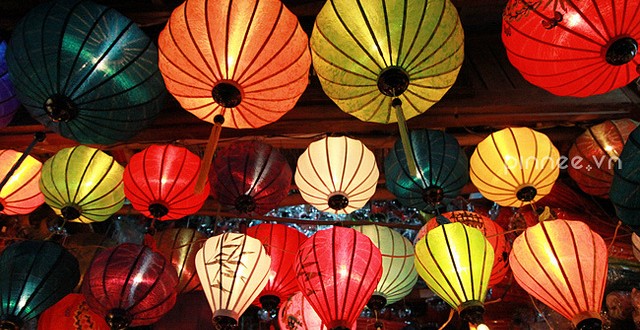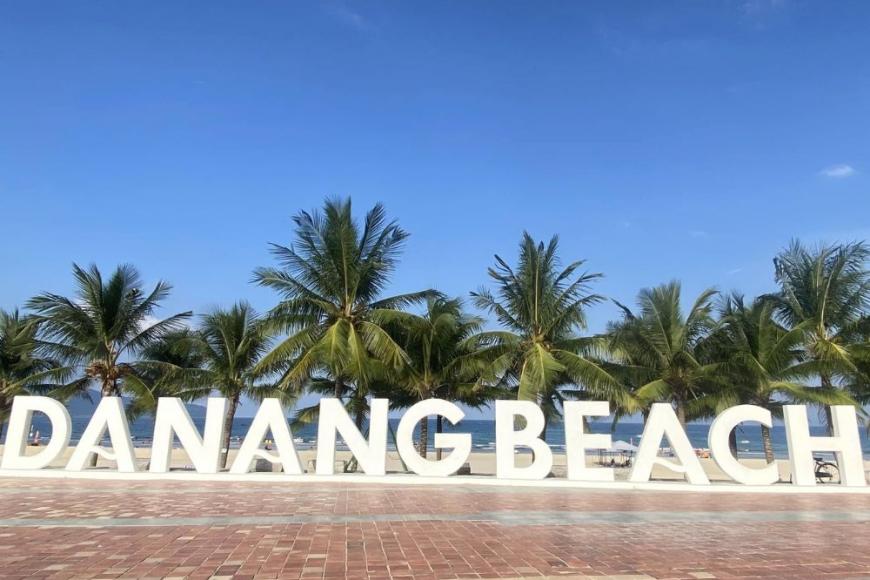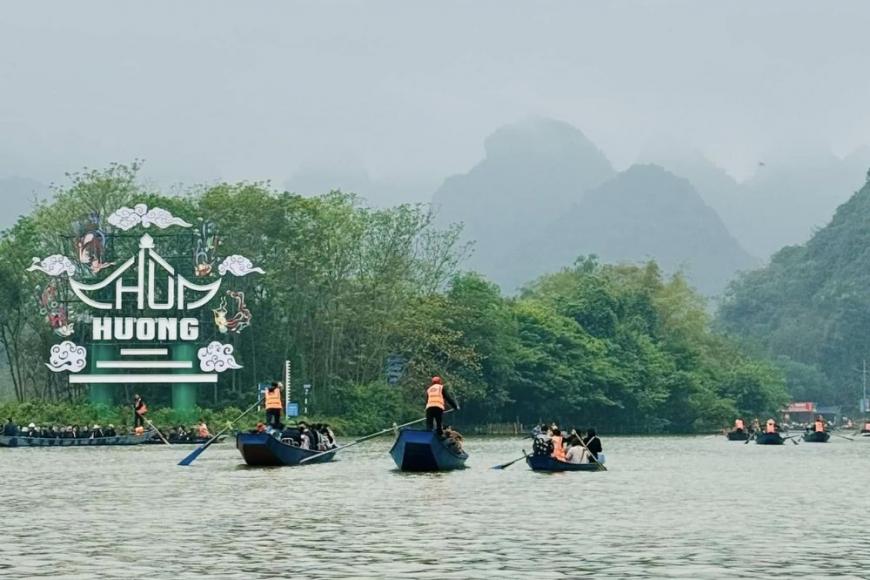- Nha Trang Travel Information
- Muine Travel Information
- Hue Travel information
- Cantho travel information
- Sapa travel information
- Ha Giang Travel Guide
- Ninh Binh Travel Information
- Quy Nhon Travel Information
- Vietnam Travel Information
- Hoian Travel Guide
- Vung Tau Travel Information
- Quang Binh Travel Information
- Phu Quoc Travel Information
- Ha Tinh Information
- Ca Mau information
- Quang Ninh Travel Information
- Tay Ninh Travel information
- Hoian travel guide
- Tien Giang travel guide
- Con Dao Travel information
- Ninh Thuan information
- Moc Chau information
- Danang Vietnam Travel Information
- Hanoi Travel Information
- Ho Chi Minh Travel Information
- Dalat Travel Information
Hoian Travel Tips
HOI AN TRAVEL TIPS
All Things You Should Know Before Travelling to Hoi An
History of Hoi An ancient town
During this period, Hoi An was an international commercial port flourished in most of countries and Southeast Asia, a major economic base of the Nguyen dynasty also.
On December 4, 1999, United Nations Education, Scientific and Cultural Organization has enter Hoi An’s name to the World Heritage and Cultural List on August24, 2000, Hoi An was again awarded the title "Hero of Socialist Labor" in the renovation period.
Nowadays the Ancient Town of Hoi An is a living museum and is registered as one of the UNESCO Heritage Sites, attracting a lot of tourists every year.
Top things to do in Hoi An
- Wander down the old streets of Hoi An
Spend hours, wandering slowly through the streets and admiring the French & Asian style houses, shutters, and colors. The architecture provides a real nostalgic feeling and has been perfectly maintained. it is small enough to get around in on foot and the traffic is nowhere near as heavy as in bigger cities. Some of the streets only allow bike and motorbike traffic and some are pedestrian only.
- Chua Cau (Japanese) bridge
The iconic sight of Hoi An is the Chua Cau Bridge, that sits over the river. This bridge, built in the late 16th century at the time of Japanese immigration, is one of the most popular things to do in Hoi An, Vietnam. See the architectural details of the charming and well-preserved bridge by day or see it beautifully lit up by night.
- Take Cooking class
Replicate traditional regional specialties handed down through the generations in lively classes at the Gioan Restaurant and Cooking School. Many of the classes include a visit to the local fresh produce market as part of the course where you’ll get a chance to ask questions and perhaps even sample some exotic delights.
With so many places to try your hand at conjuring up some delicious flavours, you’ll also be pleased to discover that most classes are offered at very reasonable rates. Dishes might include pho noodles, spring rolls, banh xeo (crêpes) and green papaya salad, but you choose for yourself from a vast selection.
The lesson culminates with a feast of your own making, accompanied by a beer or cola, and you get a recipe book so you can put your new-found skills to work when you get home and relive the experience all over again.
- Admire the Fujian (Phuc Kien) Assembly Hall
One of the grand buildings in Hoi An was constructed in the 17th century as a social and sacred space for the Fujian Chinese community of Hoi An. Its massive gateway is adorned with bright carvings of Chinese mythological figures, and there’s an impressive main courtyard.
- My Son sanctuary
My Son was a political centre and a royal burial ground and the complex consists of more than 70 structures devoted to Hindu gods and goddesses and the most noticeable one Shiva was considered the protector of the Champa’s kings. My Son Hindu Sanctuary, a UNESCO World Heritage Site, is a great sample of the ancient Champa civilization located in the southern part of Vietnam and their skilful use of red bricks and sandstone is remarkable.
- Visit the Old House of Tan Ky
The family home was built in the 18th century and would have belonged to a family of merchants. The architecture here is a mix of Japanese, Chinese and traditional Vietnamese design motifs. this is amazing property.
- Quan Cong Temple
Founded in 1653, this small temple is dedicated to Quan Cong, an esteemed Chinese general who is worshipped as a symbol of loyalty, sincerity, integrity and justice The Quan Cong Pagoda Temple is decorated in bright gold and red, which is typical for Chinese temples. It stands out against the yellow buildings and is a perfect example of the cultural influences.
- Sunbathe on the An Bang Beach
Hoi An’s most famous beach is Cua Dai, west of the city, but head to An Bang just north of it for a more peaceful seaside interlude. You’ll be rewarded by white sands, beachfront restaurants and even romantic beachside villas.
- Boat along the river
Thung Chai is the name of this round basket style boat, which is made from bamboo. Try navigating for yourself and you’ll see it’s almost impossible to not spin round in circles, due to the shape of the boat. There are lots of options to learn this and enjoy an entire morning or afternoon learning about this ancient craft. A must-do experience whilst in Hoi An!
- Visit Tra Que Vegetable Village
Tra Que Village is a 40-hectare island known for growing vegetables without the use of any harsh chemicals. Instead, they grow their vegetables using an all the natural algae found exclusively in the village’s lagoon. It results in produce that’s described as being the freshest and cleanest in Hoi An.
When is the best time to travel to Hoi An
Hoi an have two season the dry and the wet seasons. The temperature throughout the year almost remains the same, which is, an average of 29°C during the peaks of the day, and around 24°C after sundown.
The best time to visit Hoi An is from February to June. February to April is the time of comfortable temperatures, low humidity, favourable sunshine hours and balmy sea temperature. May, June and July are also an excellent time to visit this ancient seaside town.
These months don't receive heavy rainfall, but the temperature tends to go up a little during this time, and hence might turn a bit uncomfortable for visitors.
- If you travel by train
There are many train ticket from Sai Gon to Hoi An, it take around 11 hours. Or train from Ha Noi to Hoi An take around 16 hours.
- If you travel by bus (local bus)
The direct bus line between Da Nang and Hoi An – Bus #1 – for just 30,000 VND (1.3 USD). Although the bus is the cheapest travel option, it will take a bit longer, 45 to 60 minutes to get to Hoi An. Bus services start at 5:30 in the morning and stop operating at 6 PM, with a frequency of one bus every 20 minutes.
- If you travel by motorbike
Traveling by motorbike is the most exciting option of all. Most locals travel in between Da Nang and Hoi An because it is the most popular form of transportation in Vietnam, and it allows for flexibility to visit destinations along the way.
However, if this is your first time in Vietnam and you are not familiar with driving a vehicle similar to the motorbike, I would not recommend this option because it is fairly risky. Traffic in Vietnam is quite different from traffic in other countries. The average price for a bike rental is 130,000 VND (6 USD) per day. Some shops will give you a discount for a longer rental period.
Accommodation in Hoi An

The best place to stay will be different depending on what you are looking for. Fortunately, Hoi An offers it all, a busy tourist centre, beachfront serenity and rustic rural settings. For instance, there’s a range of accommodation options in each area that will suit all budgets: family, honeymooner, backpacker, luxury, and budget.
- Stay in Hoi An Old Town.
Anantara Hoi An Resort: 1 Pham Hong Thai Street. 94 rooms and suites designed with French, Dutch, Chinese and Japanese influences that mimic Hoi An’s cultural diversity with elegance.
Allegro Hoi An: 86 Tran Hung Dao Street. Mosaic and wooden accents welcome you into this luxurious hotel. The Allegro Hoi An has five types of suites all with bathtubs and balconies and is also walking distance to Hoi An’s central attractions.
- Stay in nearby the An Bang beaches
Aira Boutique Hoi An Hotel & Villa: Located right by the white-sand An Bang Beach, it is offers luxurious rooms and suites with an on-site Vietnamese restaurant, a day spa and 2 outdoor swimming pools.
Sol An Bang Beach Resort & Spa: Located in An Bang, Sol An Bang Beach Resort & Spa is a beachfront property located just 4 km from the centre of Hoi An Ancient Town. Boasting an on-site restaurant serving seafood, local Vietnamese and Western dishes, the property offers guestrooms with an outdoor swimming pool, a beach bar and a private beach area.
- Stay in surrounding countryside
Allamanda Estate: Dong Na Hamlet, Cam Ha Commune. With couple and family villas, each fitted with private open-air bathrooms, The Allamanda Estate provides exceptional luxury in the heart of the rice fields. you also can take a walk around the gardens and lotus ponds. Then take a bath in the outdoor bathtub, and indulge with massages at their spa.
Rice Field Homestay: 52A Le Thanh Tong Street. You’ll have the comfort of spacious double bedrooms with your private balcony, and delicious home-cooked breakfast.
What to eat in Hoi An
This old town in the central province of Quang Nam is also known for its people’s honesty and hospitality and it is attractiveness also lies in its vast cuisine with foods that are cheap but delicious. Moreover, food of decent quality can be found even in street stalls and small eateries. Our suggestion as below:
- Mi Quang (Quang Noodle): Quang noodle is popular around the country, even among foreigners. It is recognizable with its thin, flat rice noodles glazed with a mixture of peanut oil fried with onion and usually yellow broth. Traditionally, its main ingredients are shrimp and pork, which are also used to cook the broth and as toppings together with peanuts and rice crackers.
- Cao lau: this is a rice noodle believed to have been invented in Hoi An. In a way it has some things in common with Chinese and Japanese noodles. Its al dente noodles, for instance, look raw and thick like Japanese udon. Its toppings include slices of pork that look like char siu or Chinese barbecued pork. Cao lau is eaten with lots of herbs and vegetables which greatly enhance its flavors.
- Com ga, or chicken rice, is not exclusive to Hoi An, but locals have successfully improved on it, making it one of their signature dishes. A dish of chicken rice is mouth-watering with its pleasantly yellowed rice topped with hand-shredded chicken and herbs. It is served with a small bowl of soup containing some chicken giblets like heart and liver. It is said that to make the famous com ga, Hoi An people carefully choose rice and chicken of top quality. They season the rice before cooking it with chicken broth and pandan leaves on wood-fired clay ovens.
Go back!
other
Danang city is the central province in Vietnam, and is known as the stunning coastal of Vietnam. Coming to Danang, you can visit many tour attractions and explore the beautiful beaches. In this guide, Vietnam Trust Car Rental will offer top 8 spectacular beaches in Danang, bringing its distinct charm and promising memorable experiences.
If you have the opportunity to visit Danang, you should spend time visiting beaches in Danang with clean waters and sands. You can join many outdoor activities like kayaking, surfing, beach volleyball, jet skiing. There are a lot of the luxury resorts and local restaurants around the beach, offering an interesting journey during your vacation.
Son Tra Peninsula, Danang is well-known for the beautiful view, and is the best place in the paranomic of the city from above. If you want to get away from the bustle and hustling of the city, you should get to Son Tra Peninsula to admire the picturesque landscapes and many other activities.
My Khe beach is one of the well-known in the central Vietnam with a coastline of 30km long. The sea water is calm and green around the year, making this place the most crowded of Danang beaches, attracting many local and international tourists. You can relax in quiet turquoise water, sunbathe on white sand and take part in outdoor activities on the beach.
Perfume Pagoda is the largest and famous in Hanoi. There are a large number to come here to seek an immersive cultural experience and admire the stunning landscape. Coming to Hanoi, you should visit Perfume Pagoda which is a place for both religious pilgrims and tourists.
Enjoying the massage service at Danang spas is a way to restore balance after a long exhausted journey. All of the stress, fatigue and work pressure will be depleted. Let's explore the best spas in Danang in this guide.








